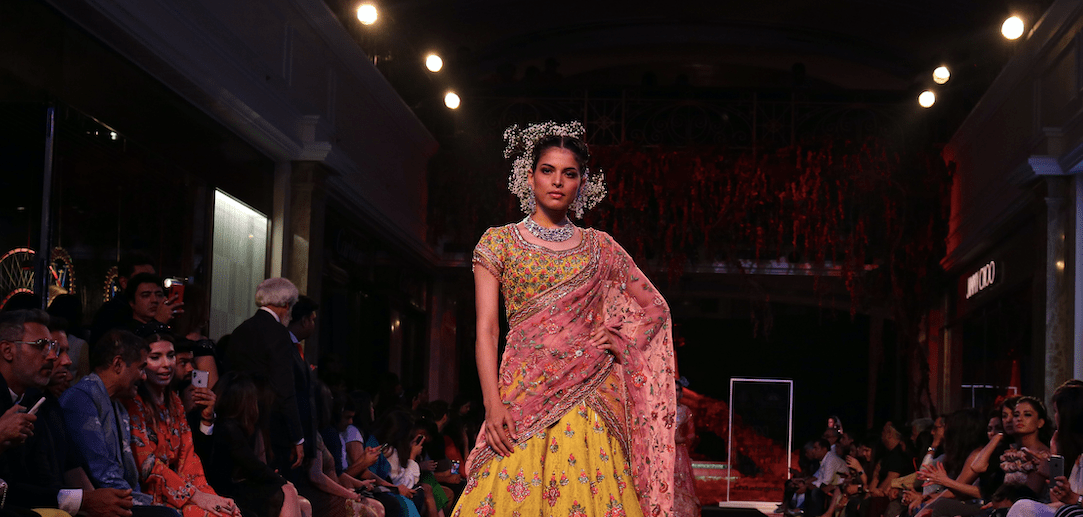The impact of colourism on beauty standards
CW: discussion of racism and racially-motivated violence
“She’s not very pretty, is she? If only she was a bit fairer.” That was a typical conversation I would hear from my grandma, parents, aunties, and uncles growing up. The context was always the same, someone had just got married and the adults would huddle around a photo of the new couple. They would compare to the skin complexity of bride and groom to assess whether they are a good match.
Ethnic minority communities in the West have long faced racial discrimination from the white population. My grandma would tell me stories of having bricks thrown through her window because they were the only Asian household in the street. I’ve thankfully never faced racially motivated violence and have the utmost respect to my parents and grandparents for living through it.
Colourism, without a doubt, has its roots in European colonialism
Yet, there seems a cognitive dissonance between the condemnation of racism faced by ethnic minority communities from the white population and the colourism occurring within communities. Worse, at some points, colourism escalates to full-blown racism against the African-Caribbean community. Even in the black community, there are subtle preferences for ‘light-skin’ people in the dating scene, while some in the Middle Eastern community have informal notions of racial hierarchy which puts lighter-skin Arabs above darker-skin Arabs.
Colourism, without a doubt, has its roots in European colonialism. In South Asia, British colonial rule constructed notions of caste and social hierarchies, which placed darker-skins Indians in lower castes. Even after independence, caste is a parasite that continues to wreak havoc on social cohesion in India. In neighbouring Pakistan and Bangladesh, while formal caste systems don’t exist, there persist informal social hierarchies based on your family and where you live (which tend to coincide with your skin complexity).
The belief that ‘white is better’ has been exploited by capitalism
Africa shares a similar colonial history to South Asia. The various European powers that divided and conquered the continent had instilled notions of racial superiority into the education system and culture. While the Middle East was largely untouched by European colonisation, the Ottoman Empire had a close relationship with the Western powers. The cultural exchange and bid to catch-up technologically and economics led to a belief in white racial superiority and this belief has persisted to the present day.
Gulf states such as Saudi Arabia and the United Arab Emirates also have a large population of South Asian migrants for ‘low-skilled’ labour. This has ingrained a perception that South Asians are uneducated, ‘dirty’ and low skilled. I have experienced this first-hand when visiting Saudi Arabia, where I was frequently discriminated against, along with my family, because of our brown skin complexion.
This has been exacerbated by traditional and social media
The belief that ‘white is better’ has been exploited by capitalism. Skincare companies such as L’Oreal and Garnier have been advertising their product skin lighteners in India. In African countries such as South Africa, darker-skinned young people have felt the pressure to use skin bleaching products to have fairer skin like their peers. This has been exacerbated by traditional and social media, which portray fairer skin actors and models as beautiful. In Bollywood and Indian TV serials, also broadcasted in the UK, main characters have makeup slathered all over them to look fairer, while extras and villains are made to look noticeably darker.
This isn’t just a problem in non-Western countries. The lack of representation of ethnic minorities in the media and fashion industries lead to children growing up believing that only fairer skin people can be beautiful and famous. In the music industry too, all too often fairer skin artists are given brand deals and sponsorships to dress in designer clothing.
It is up to ordinary people like you and me to be the change we want to see
True, things are changing, slowly. Zendaya, for example, was named spokesmodel for French cosmetics brand Lancôme. The Black Lives Matter movement has led to a resurgence of awareness of the importance of black representation.
Ultimately, it is up to ordinary people like you and me to be the change we want to see, especially if we’re a member of an ethnic minority community. That means having uncomfortable conversations with our parents and grandparents about their prejudices. It means calling out our peers when they make offensive comments about someone’s skin tone, including in social media where people believe feel a sense of animosity to speak their prejudices.
It also means boycotting brands that continue to exacerbate notions of beauty and skin colour. Change doesn’t happen overnight; the history of colourism and racism is hundreds of years in the making. I hope it won’t take as many years to dismantle it.

Comments